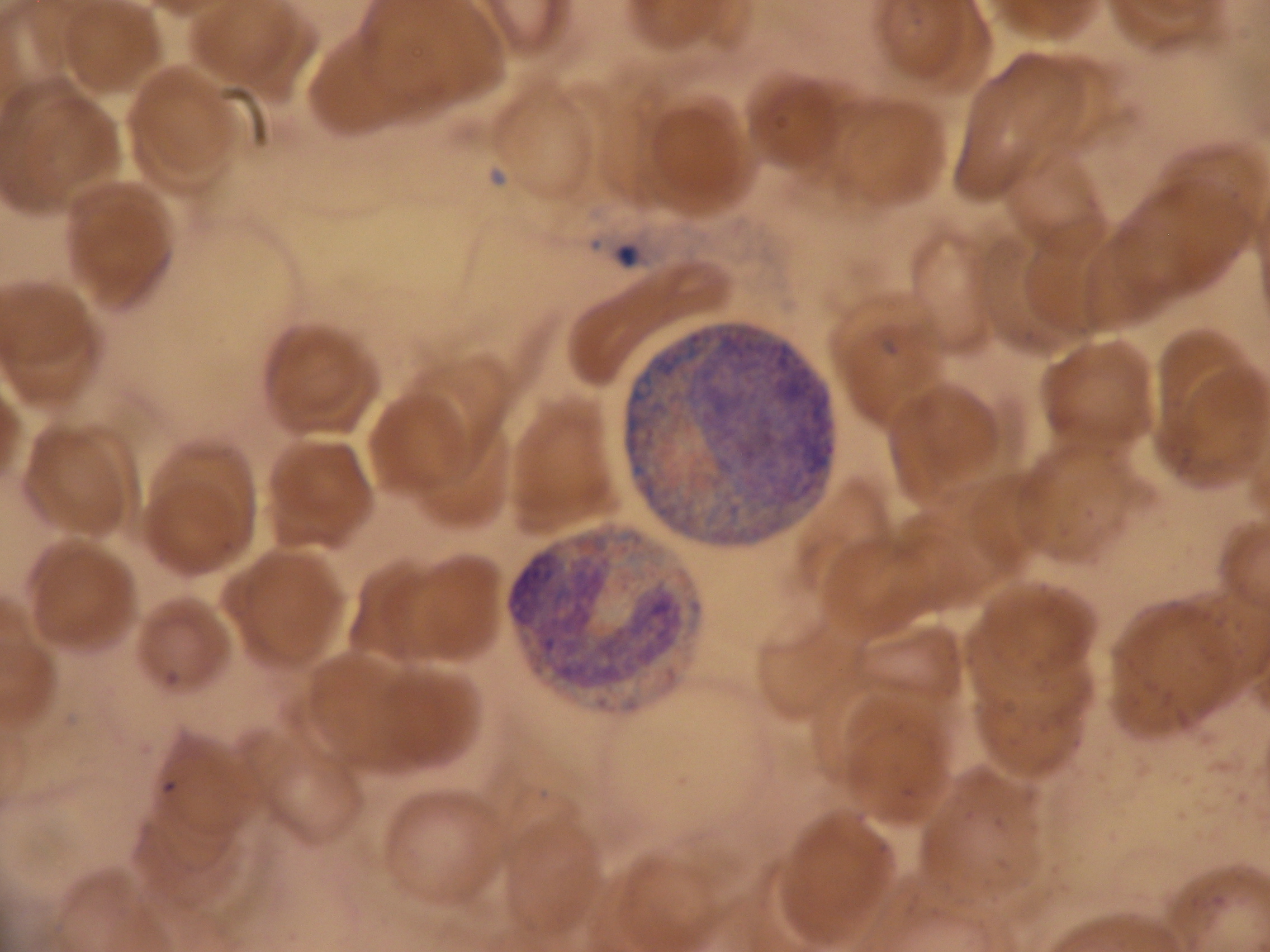Toxic Granulation on:
[Wikipedia]
[Google]
[Amazon]
 Toxic granulation refers to dark coarse granules found in granulocytes, particularly neutrophils, in patients with inflammatory conditions.
Toxic granulation refers to dark coarse granules found in granulocytes, particularly neutrophils, in patients with inflammatory conditions.
Clinical significance
Along withDöhle bodies Döhle bodies are light blue-gray, oval, basophilic, leukocyte inclusions located in the peripheral cytoplasm of neutrophils. They measure 1-3 μm in diameter. Not much is known about their formation, but they are thought to be remnants of the ...
and toxic vacuolation, which are two other findings in the cytoplasm of granulocytes, toxic granulation is a peripheral blood film finding suggestive of an inflammatory process
Inflammation (from la, inflammatio) is part of the complex biological response of body tissues to harmful stimuli, such as pathogens, damaged cells, or irritants, and is a protective response involving immune cells, blood vessels, and molec ...
. Toxic granulation is often found in patients with bacterial infection and sepsis, although the finding is nonspecific. Patients being treated with chemotherapy or granulocyte colony stimulating factor
Granulocyte colony-stimulating factor (G-CSF or GCSF), also known as colony-stimulating factor 3 (CSF 3), is a glycoprotein that stimulates the bone marrow to produce granulocytes and stem cells and release them into the bloodstream.
Functional ...
, a cytokine drug, may also exhibit toxic granulation.Composition
Toxic granules are mainly composed of peroxidase andacid hydrolase
An acid hydrolase is an enzyme that works best at acidic pHs. It is commonly located in lysosomes, which are acidic on the inside. Acid hydrolases may be nucleases, proteases, glycosidases, lipases, phosphatases, sulfatases and phospholipases and ...
enzymes, and are similar in composition to the primary granules found in immature granulocytic cells like promyelocytes
A promyelocyte (or progranulocyte) is a granulocyte precursor, developing from the myeloblast and developing into the myelocyte. Promyelocytes measure 12-20 microns in diameter. The nucleus of a promyelocyte is approximately the same size as a mye ...
. Although normal, mature neutrophils do contain some primary granules, the granules are difficult to identify by light microscopy because they lose their dark blue colour as the cells mature. Toxic granulation thus represents abnormal maturation of neutrophils.
Similar conditions
Patients with the inherited condition Alder-Reilly anomaly exhibit very large, darkly staining granules in their neutrophils, which can be confused with toxic granulation.See also
* Inflammation * NeutrophiliaReferences
Hematology Histopathology Abnormal clinical and laboratory findings for blood {{Pathology-stub